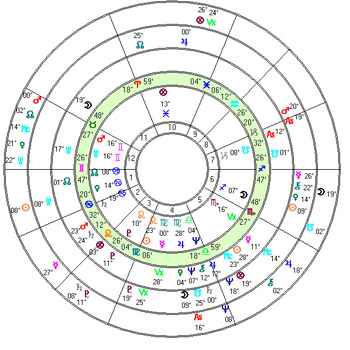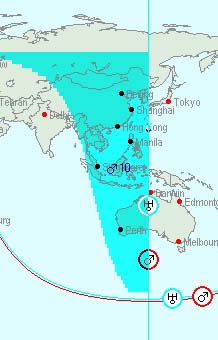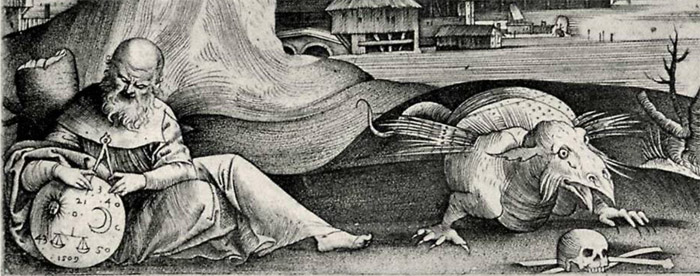Recently,
I received an inquiry about my lengthy NCGR Journal article on harmonics and arc
transforms. A British astrology student wrote:
If
I may ask, did you
become dis-enchanted
with harmonics or do you still use them? Sorry for being "nosey" but
I'm a student and find them fascinating.
A
perfectly reasonable question, and one that should lead us all to some
introspection about what astrological techniques we do and
don’t
use, which
ones were fun to try but don’t yield a lot, which ones become
essential parts
of our practitioner’s toolkit. My immediate answer ran:
I
do still use
harmonics to see if there are
patterns or emphasis of finer aspects, esp. the 5, 7, 11, and 13, which
seem to
have their unique flavors. I also use the occasional arc transform
chart to see
if a given pair relationship has deep echoes into the rest of the
chart. But
they are both fine-tuning tools to fill out the larger picture, and I
would seldom
go to them first. The marvel is, the deeper you go and the higher the
resolution, so to speak, the more perfectly put together reality seems
to be,
of necessity, no doubt. But it can be easy to get lost in the branches
of a
single tree, not even the trees at large, and thus miss the shape of
the
forest. Ultimately, they mirror, but the art is in changing reference
frames
enough so that you see the dominant patterns and don't let the
sub-patterns
overtake you.
Which
also means you take
astrology
itself as only one of the shaping forces, not the whole thing itself.
Astrologers tend to forget that your chart is the gateway through which
you
appeared, and being a picture of initial conditions and subsequent
learning
always shapes your evolving trajectory, but it is not you yourself. You
predate
it by at least nine months, possibly eons more, and likely the same can
be said
of your exit and after.
So
it's good to know
harmonics and the
finer aspects, both as the finer filigree of the astrological picture
and as its
often fractal reflection.
That
answers the immediate question, but what about all the other common,
and
not-so-common astrological techniques? What is the difference between
solid
astrological tools that paint the essentials and those that flesh out
the
filigree, when to use each and how not to confuse one with another? Not
to
mention those that simply play nice tricks but are distractions, red
herrings,
or contradictions, the recognition/disposal of which is essential to
maintain your
focus and get meaningful results.


Almost everybody
uses natal wheel with transits, progressiongs, directions (l)...fewer
use astrocartography (r)
After
forty-odd years
of practice, what
do I use, and why? Here’s a run-down, including a gaggle of
personal
article links
that further elucidate upon how I use each technique, why they work,
and how they integrate into all the rest…a world of
analysis and commentary, if you
have the time…
For a basic natal chart, I...
...always
use: Tropical signs, Koch
houses,
elements-modes-house-polarity, chart
shapes (Jones patterns), planetary
order, planetary speed
and retrogradation,
aspects and aspect
dynamics, midpoints,
the Vertex-Antivertex,
Lagrange
points. Most are really pretty standard, the
age-old basics, with a few modern
additions.
...sometimes use: Chiron,
the four major
asteroids,
fixed stars, finer
aspects such as 5,
7,
11,
13.
Degree symbols (I
like Carelli),
harmonics
and arc
transforms.
...never use: Uranian planets (they're imaginary),
newly-discovered
super-outer planets (they’re too slow), heliocentric, local
space, Davison
composites (no!),
multiple/group composites (no!),
coalescent charts (?!),
Lilith
(all three of them), esoteric astrology, sidereal or Vedic
systems.
For comparisons: Basic synastry
(planetary
degree
overlaps, planets in house overlaps only), composite
charts (true spatial
midpoints)
natal and relocated.

If you use inconsistent
techniques, the results will crawl ouf from under a rock to haunt you...
For developments:
Mainstays: transits (esp. Mars,
Jupiter, and
Saturn returns/cycles), eclipses, secondary progressions
(sign/house
change,
lunar phase, Moon
chasing Saturn), relocation
and astrocartography, solar
returns, lunar
returns, Void-of-course
Moon.
Rarely use: Solar arc directions, progressed
relocations.
Never use: Tertiary progressions,
lunar (minor)
progressions, primary directions, converse directions, precession
correction (you either go sidereal or not, don't mix).
Instruments:
Early
on,
astrologers did their own sky observations, with astrolabe and
telescope, before laying out a chart. More recently (some of us
remember), these became ephemerides, house tables, and time-change
listings wielded along with pencil and paper, and now it's all done by
computer. But all these only work if you are already well-acquainted
with what you are measuring -- which means a good grounding in techical
astrology/astronomy and astrological history. I personally use Matrix software for
my PC, because I know and trust its design and designers (including in
some cases, myself), but there are other acceptable alternatives out
there, as well. Although computers can give you lots of data and a
really good perspective on time and cycles, you shouldn't become an
unwitting slave to your cyber-toys. It is your consistent choice
of interpretive methods and your knowledge of how they came to be that
allows them to be of any value to you at all.
Simple
principles
So is
there a method behind what methods I choose? You bet. It’s
all
about internal
consistency and logic, extrapolated from the basics of the simplest
physical principles.
If I can’t explain exactly why it works and how it is
extrapolated from or
dovetails with everything else I use, it might as well be random
bird-scratching to me. And, I stick to the more physical world, which
is why I
don’t dabble in heliocentric or esoteric, both of which purport
to apply primarily to loftier and more ineffable spiritual
concerns. I have enough trouble making the observable parts fit,
without including the hypothetical.
Weighing
and combining
In the end,
it's all about weighing and
combining sky and earth realities to
broadly counsel the person who's horoscope you're looking at. And you
can only do that if the the tools you are using are consistent,
time-tested, and wielded with skill and experience. The planets are
only one level of our multi-scaled existence, so use
only the tools that apply directly to what you are analyzing, as
astrology per se isn't
everything, by a long shot. It's a big universe, and both we and
the planets, in our immediately neighboring scales, are just two
fractally-reflecting parts of many above and below us.
Here's hoping
that some of the many links
above will help you understand just what I mean by that, and be of aid
in choosing your own toolkit, with which to forge your own evolving
practice.

